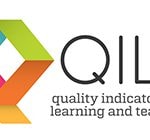The month’s highlights on higher education from across the web
1. Can We Teach Critical Thinking?
Can We Teach Critical Thinking? from The Learning Scientists

Critical thinking is difficult. Individuals who perform well when analysing a domain of knowledge that they have a specialist understanding of will do less well when attempting to think critically about topics they know less about. The author gives the example of being personally able to think critically about the way cognitive psychology is explored in films such as The Matrix due to her training, but being unable to think critically about the cinematography of the film due to a lack of knowledge of the topic.
There is such a thing as a generalised ability to think critically and apply it to a range of situations and the author suggests that this is what most teachers are thinking about when they refer to improving students’ critical thinking abilities. There are strategies to aid the development of generalised critical thinking skills, but the necessary practice will need to occur within specific domains of knowledge.
Development of critical thinking is difficult because it is a complex, higher-order skill. Can we teach it? Yes, to an extent, but its acquisition relies on practice and personal application. Providing regular opportunities in the curriculum for practice is crucial. The author uses a lot of scaffolding in her teaching to support students to develop competence and to learn to transfer it to differing domains of knowledge.
The key elements that guide the acquisition of generalised critical thinking skills are:
- Appropriate scaffolding of tasks
- Practice and recreation of the knowledge around critical thinking at regular intervals
- Practicing transference to different topic areas
- Mapping arguments to make it easier to understand the complexity
- Reflecting on our beliefs and being aware that it is difficult to think critically about something that conflicts with our belief structures
2. Student Experience Survey National Report
 Student Experience Survey Report from Quality Indicators for Learning and Teaching (QILT)
Student Experience Survey Report from Quality Indicators for Learning and Teaching (QILT)
The Student Experience Survey is a national survey of current higher education students in Australia, funded by the Australian Government. It provides a snapshot of over 280,000 students’ responses to their perceptions of student experience, which includes learner engagement, teaching quality, student support, learning resources, and skills development. Apart from the obvious inter-institutional comparisons, the report has some other useful elements, such as:
- Sections 2.8 and 3.6 outline reasons for early departure for undergraduate and postgraduate students, respectively. Health/stress, the balance between study and life, difficulties with workload, and balancing the need for paid work or having financial difficulties were the most common reasons for early departure. This, the report writes, “underscores the importance of student support in terms of assisting students to continue with their studies”.
- Appendix 2 has a summary of the actual instrument (the Student Experience Questionnaire) used to gather data for the SES. For example, learner engagement and student support were the lower-performing aspects of student experience across the country. Examination of the questionnaire items suggests that the former centres around learner belonging, community, interaction, and preparedness – key factors that are part of the University’s new Student Experience Strategy. On the other hand, student support refers mainly to admissions, orientation, and academic, career, and other advice.
3. How to Be a Better Online Teacher
How to Be a Better Online Teacher from The Chronicle

Part of the Chronicle Advice Guides series, this article focuses on an increasingly important issue for contemporary teaching – “How to be a better online teacher” – especially given the rise of blended and online learning. Whilst being an online teacher can be “just as rewarding as teaching in a bricks-and-mortar classroom”, unsurprisingly it throws up specific challenges of its own. Among these challenges features the experience and interest of the actual teachers involved. To help start to combat these issues, Flower Darby takes us through some positive steps we can take to become better online teachers. Read on, and break down some common misconceptions around online teaching. Perhaps you will even discover that creating great online learning environments for your students and enjoyable teaching experiences yourself might not be as difficult as you think.
4. Video Assignments Are the New Term Paper. How Does That Change Teaching and Learning?
 Video Assignments Are the New Term Paper. How Does That Change Teaching and Learning? from EdSurge
Video Assignments Are the New Term Paper. How Does That Change Teaching and Learning? from EdSurge
How are videos changing teaching in higher-ed? According to Bryan Alexander, edtech consultant and futurist, video could become the leading digital technology used in education. In this article for EdSurge, Alexander even explores the possibility that video assignments could become the new “written report” in years to come.
In a higher-education context, the use of videos has traditionally been consumptive in nature, with the focus on teachers using video for additional content delivery or flipped learning. However, there is currently an interesting shift “from consumption to production” taking place in higher-ed, where students are now being asked to generate their own digital multimedia as a form of (mostly) summative assessment. We can see this shift happening at Sydney, most recently reflected in Yammer conversations over the last few weeks.
Video can be a great way to embrace student-generated content in your teaching. Producing video content can be an effective way for students to learn and can lead to a number of benefits, including the developing graduate qualities, improved final exam performance, and building an ongoing resource for student learning.
However, Alexander highlights that using video assignments in your units does come with some risk and there are a “range of limitations to video’s utility”. It is also important not to assume that students are ‘digital natives’ and they may need some help with this new form of assessment. Providing rubrics to guide and assess learners on both audio visual quality and managing inherent risks that can come with students going out into the world filming actual video footage (such as IP, privacy, publishing, and personal risk), can also be an effective risk mitigation strategy.
Despite this, video assignments are a great way to give students choice in how they express and construct their own knowledge. Using video assignments can also be seen as part of the higher-ed shift towards learner-centred assessment, one where individual learners are recognised and where we as teachers move further away from didactic, teacher-focused education practices.
5. EDUCAUSE Higher Education Horizon Report (2019)
EDUCAUSE Higher Education Horizon Report (2019) from the EDUCAUSE

The EDUCAUSE Higher Education Horizon Report is a yearly expert-led summary of key challenges and trends around technology in higher education, including everything from microcredentials to XR, academic culture to AI, learning spaces to blockchain. Beyond the buzzword-laden but nonetheless exciting future-telling around technologies that are set to revolutionise education, the report also highlights important sector themes supporting, and significant barriers to, technology adoption. For example, the expert panel highlighted the need to involve academics and staff (and especially sessional teachers) in the entire process of technology selection and implementation, especially as the pace of change picks up and scalability becomes an issue. The role of higher education institutions and the practice of teaching are also called into question, with the panellists pointing to increased interdisciplinarity and student-centred teaching approaches becoming a necessity as the sector shifts in response to cohort, economic, and political pressures. This year, we are also excited to see Sydney’s very own Student Relationship Engagement System being featured as an exemplar for impactful analytics technologies.
6. The Distracted Classroom: Do Tech Fasts Work?
 The Distracted Classroom: Do Tech Fasts Work? from The Chronicle
The Distracted Classroom: Do Tech Fasts Work? from The Chronicle
James Lang continues his meditation on the distractions of technology in the classroom with a third article. His first piece, (summarized in March ‘19’s On the Wire), argued that in a world of technology promising to make our lives simpler, the most effective ways to learn are not the easiest and it is a challenge to convince students of that. The second (in April’s edition) took a historical perspective to see whether the problem of distraction and inability to focus is getting worse as the use of technology increases.
The third instalment considers whether complete “fasts” (periods of no use) are a solution to breaking bad habits around the use of technology, considering that its distractions lead to instant rewards which stimulate pleasure centres in the brain.
Continuing to cite research from the book by Gazzaley and Rosen, Distracted Mind: Ancient Brains in a High-Tech World Lang claims that technology fasts are ineffective because the reward mechanism offered by technologies tests our willpower and cognitive control in much the way that food rewards do, without making the lasting changes to our neural networks that would lead to improved powers to resist.
Eyal and Robertson in ‘Your Ability to Focus Has Probably Peaked: Here’s How to Stay Sharp’ explain that Gazzaley and Rosen’s research has shown that the ability to focus and the tendency to be distracted are actually separate brain functions rather than being intrinsically related. Both are critically important for the act of paying attention, however. And it is the tendency to be more easily distracted that increases with age.
So what did Gazzaley and Rosen find works to help our brains limit distraction?
- Use one screen, one browser window and one program at a time
- Keep your physical and virtual desktop tidy and uncluttered
What works to increase our ability to focus?
- regular exercise
- meditation
- spending time in nature
- scientifically validated cognitive training exercises
- some immersive action video games
Lang’s fourth and final piece in the series will consider possible solutions to the problem of technology’s distracting presence in the classroom.
This article was contributed by the Teaching@Sydney editorial team.





